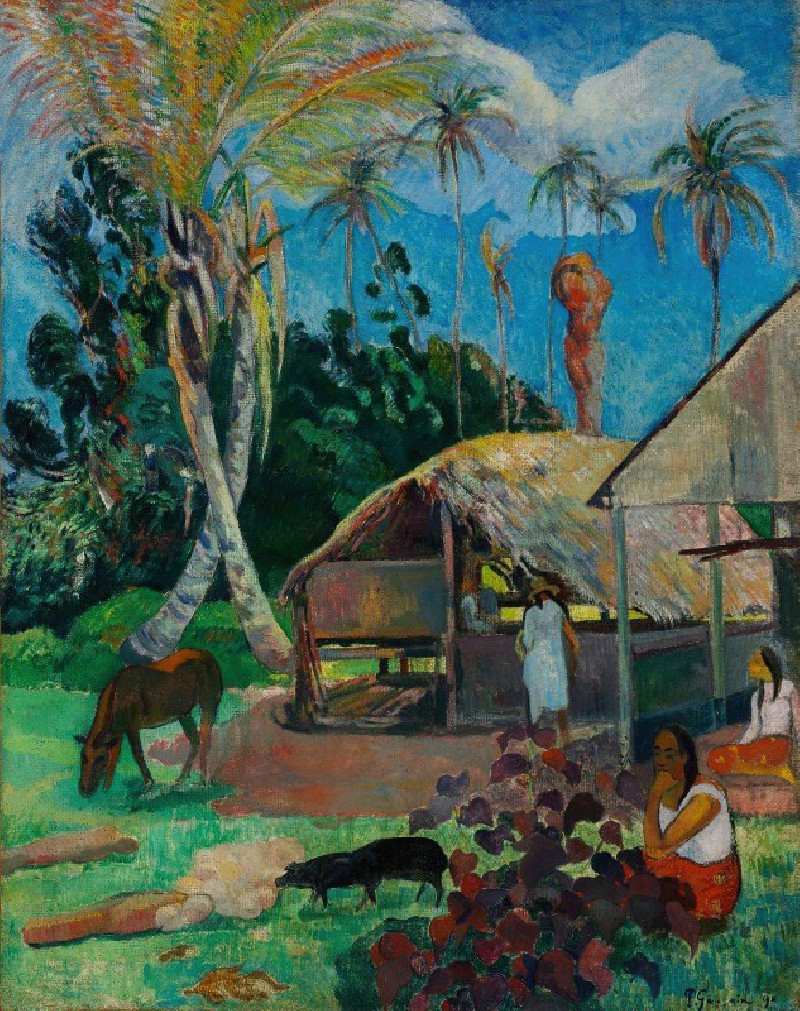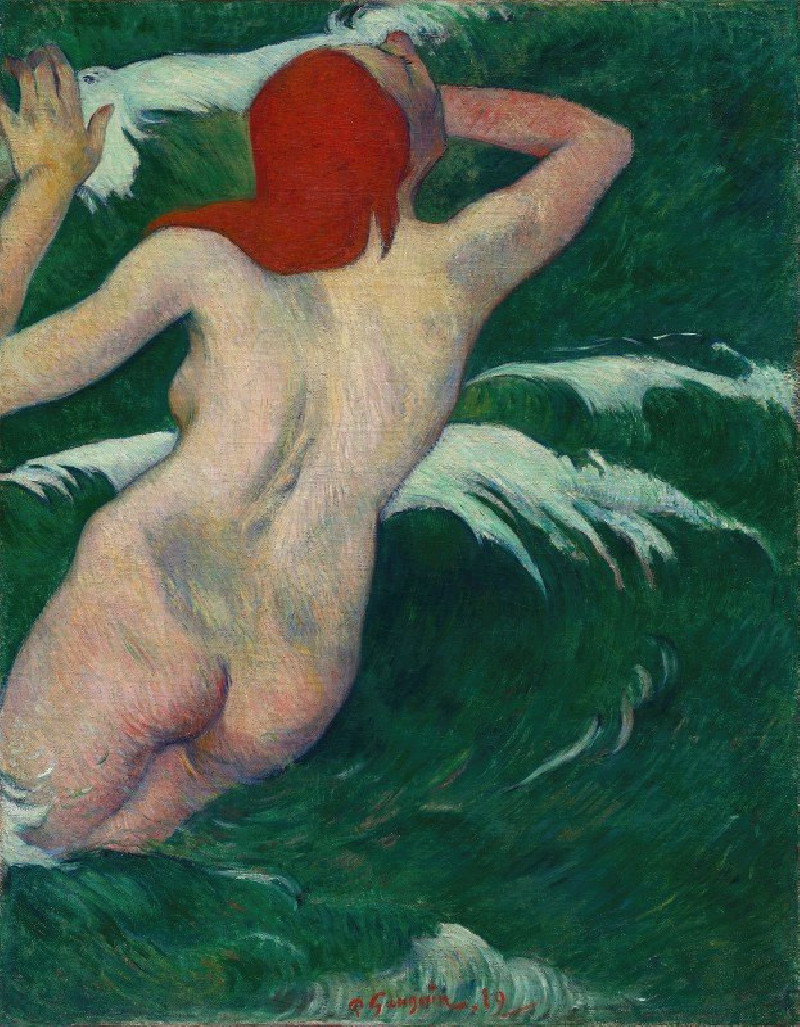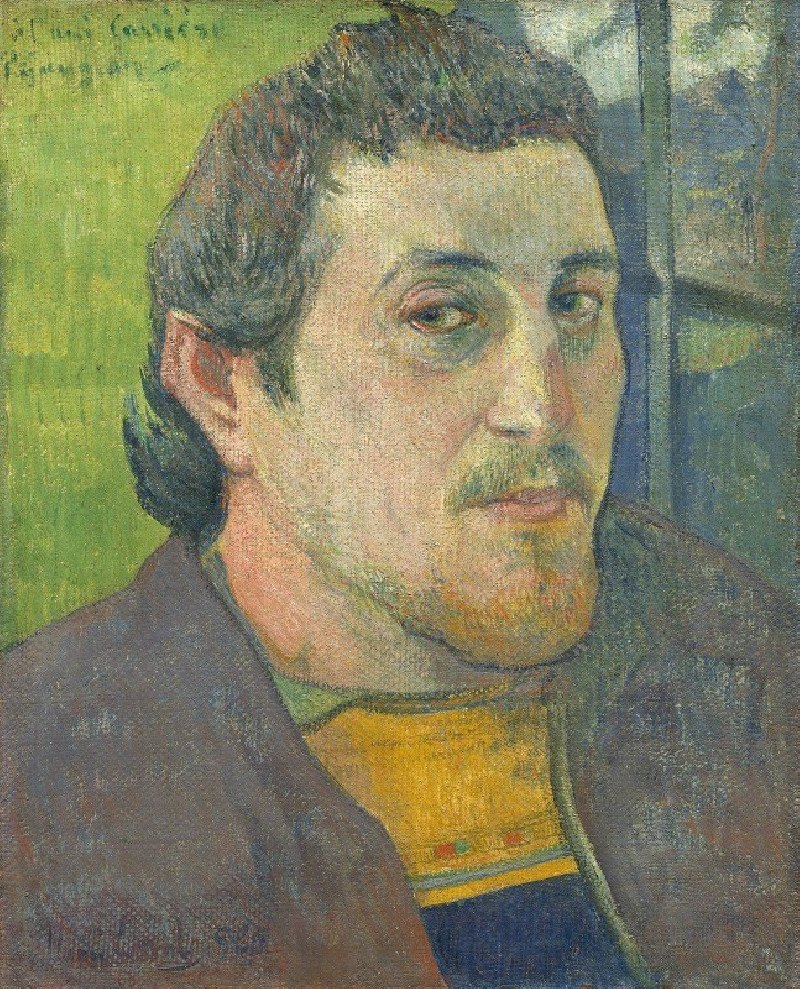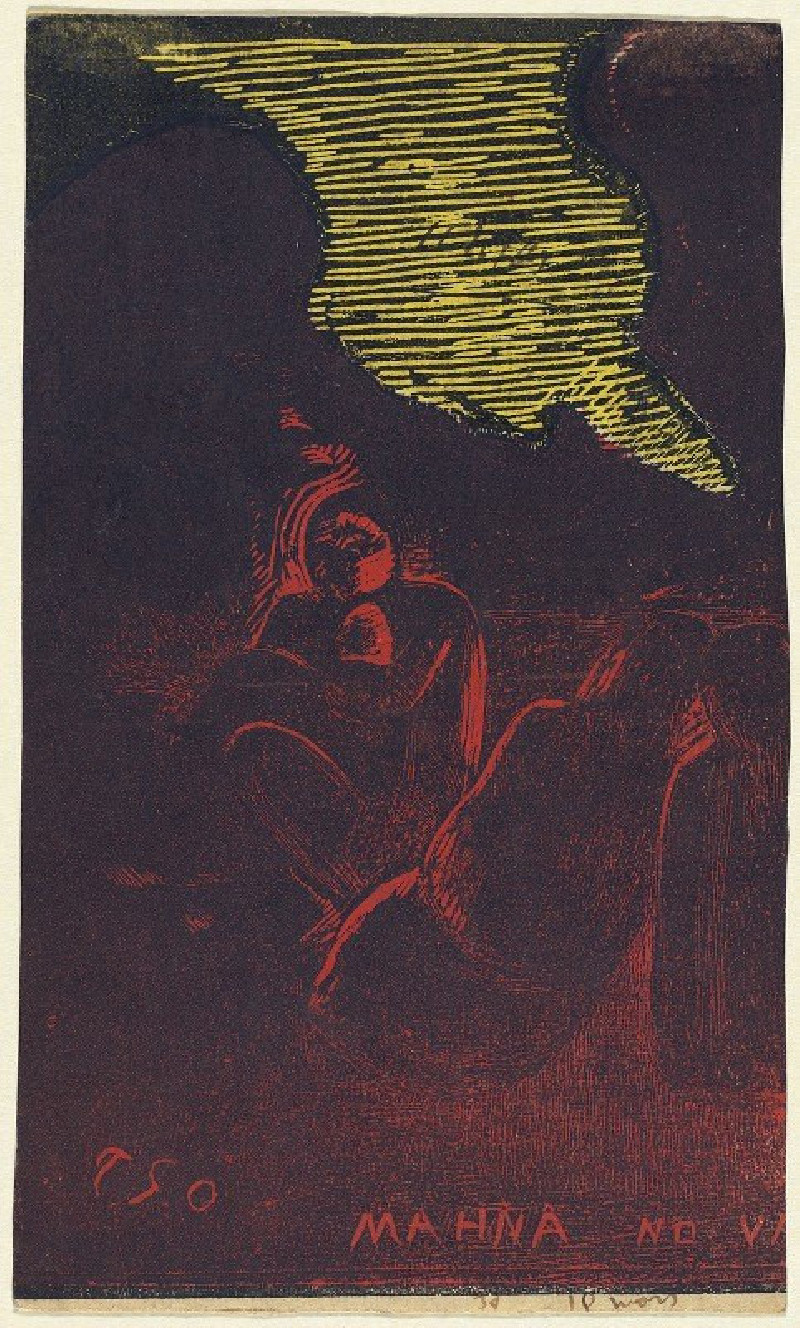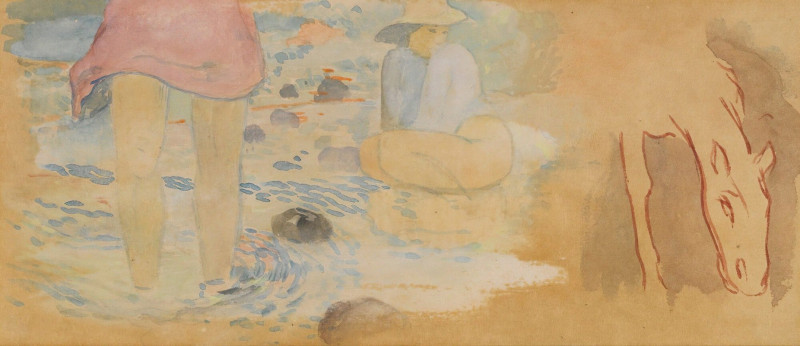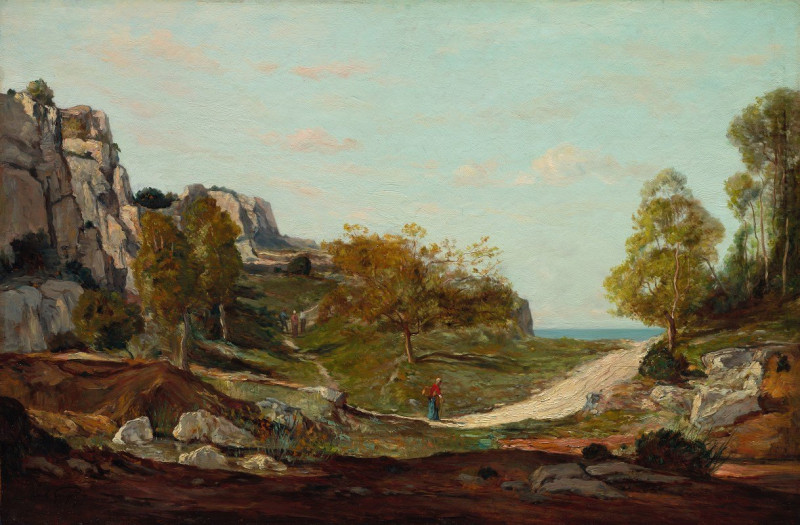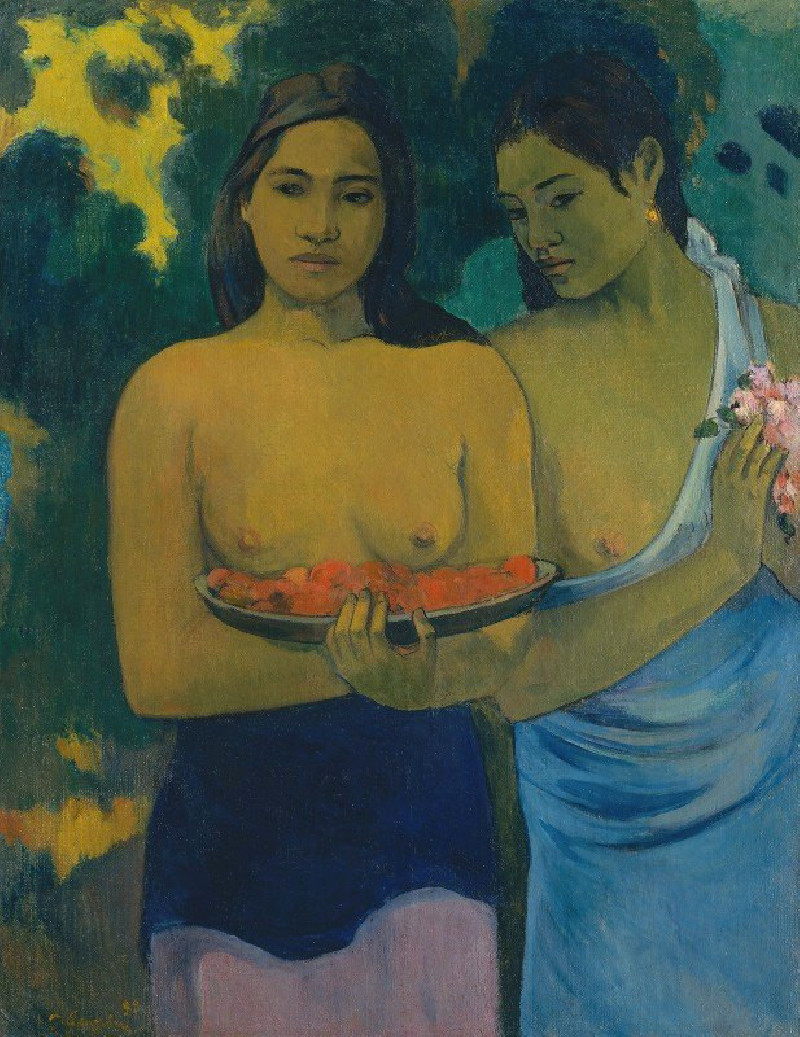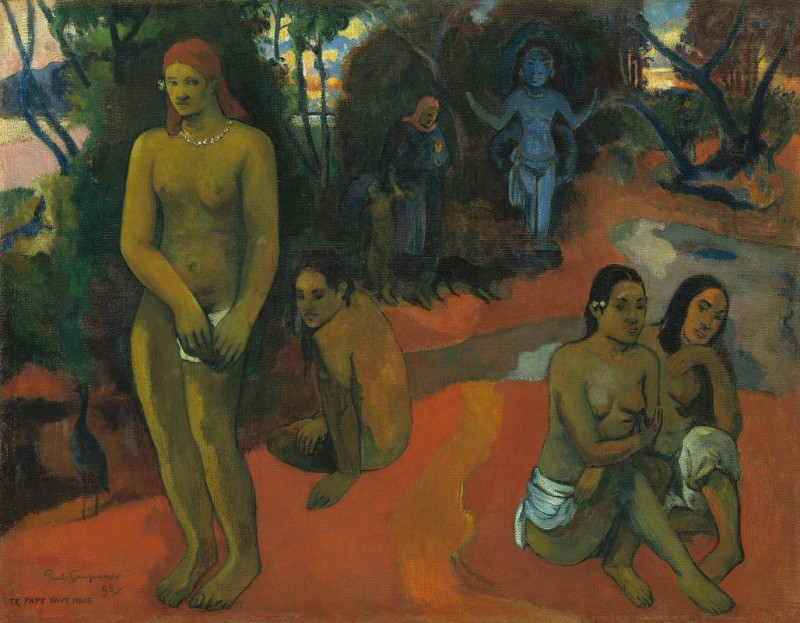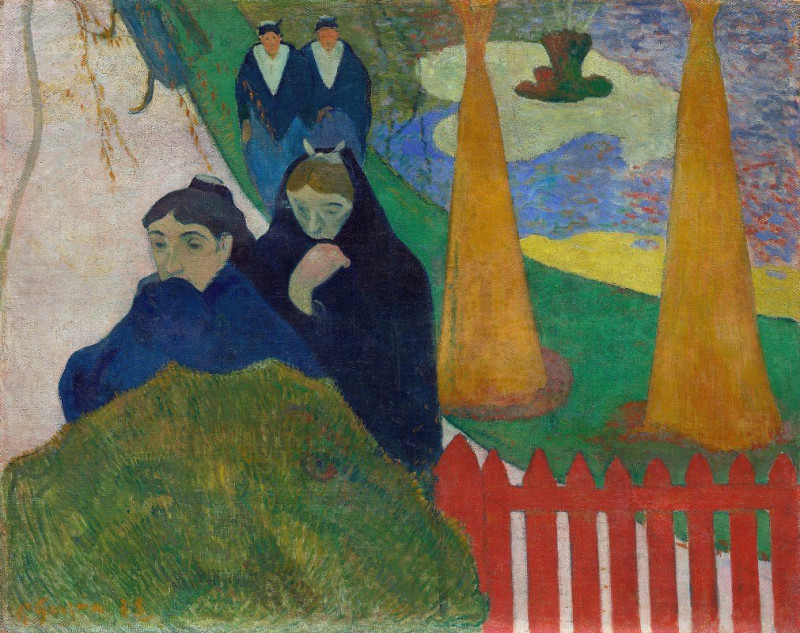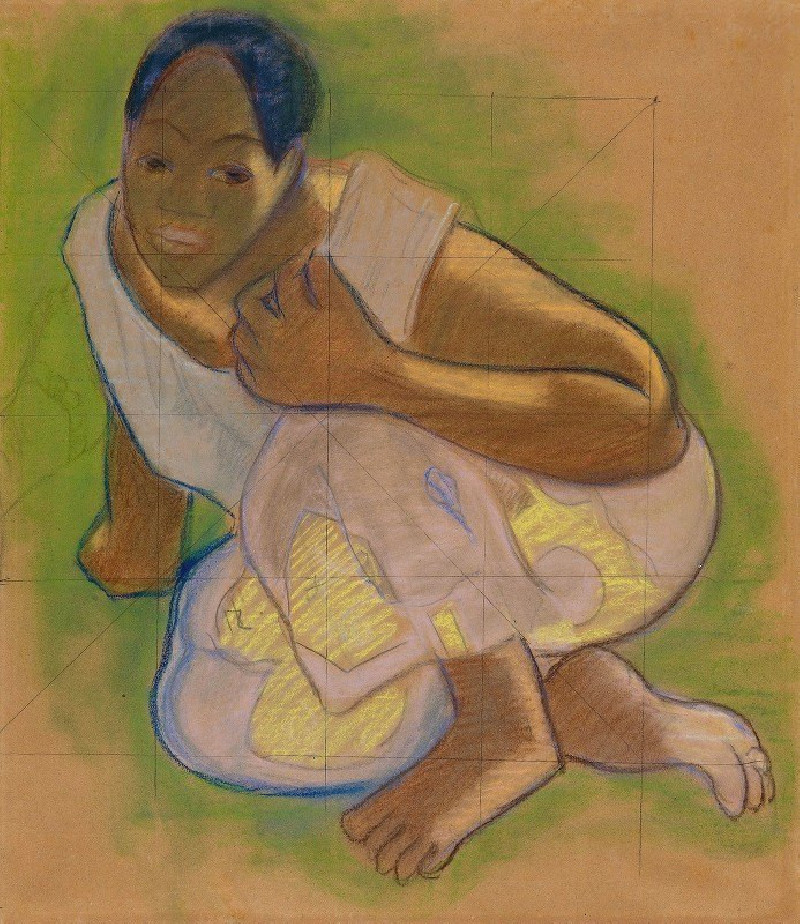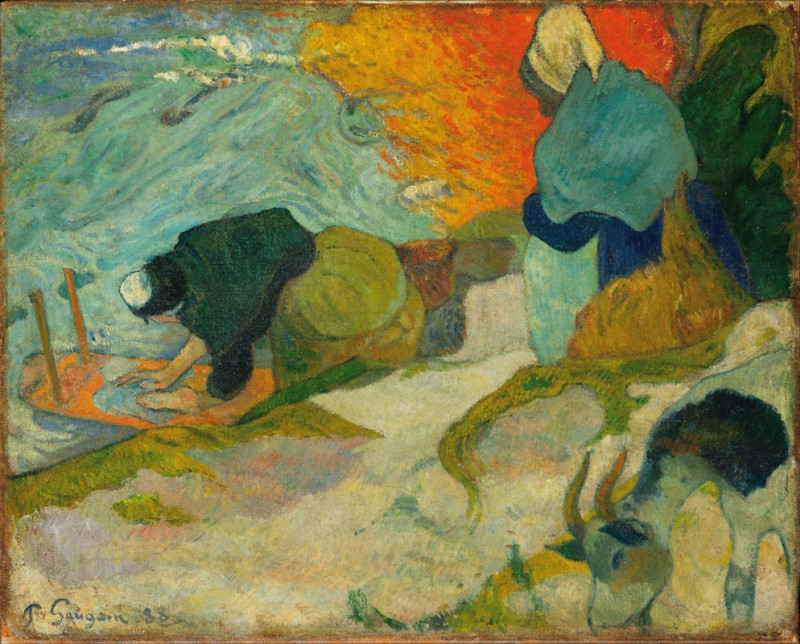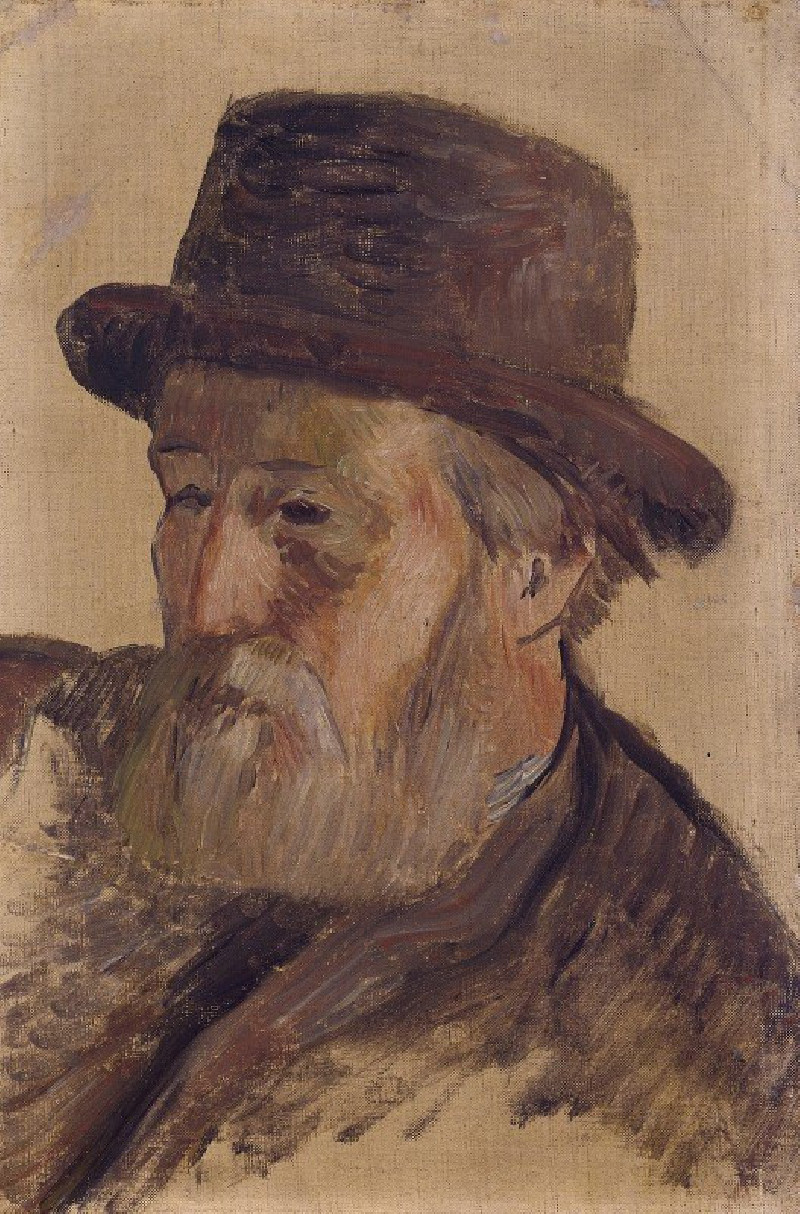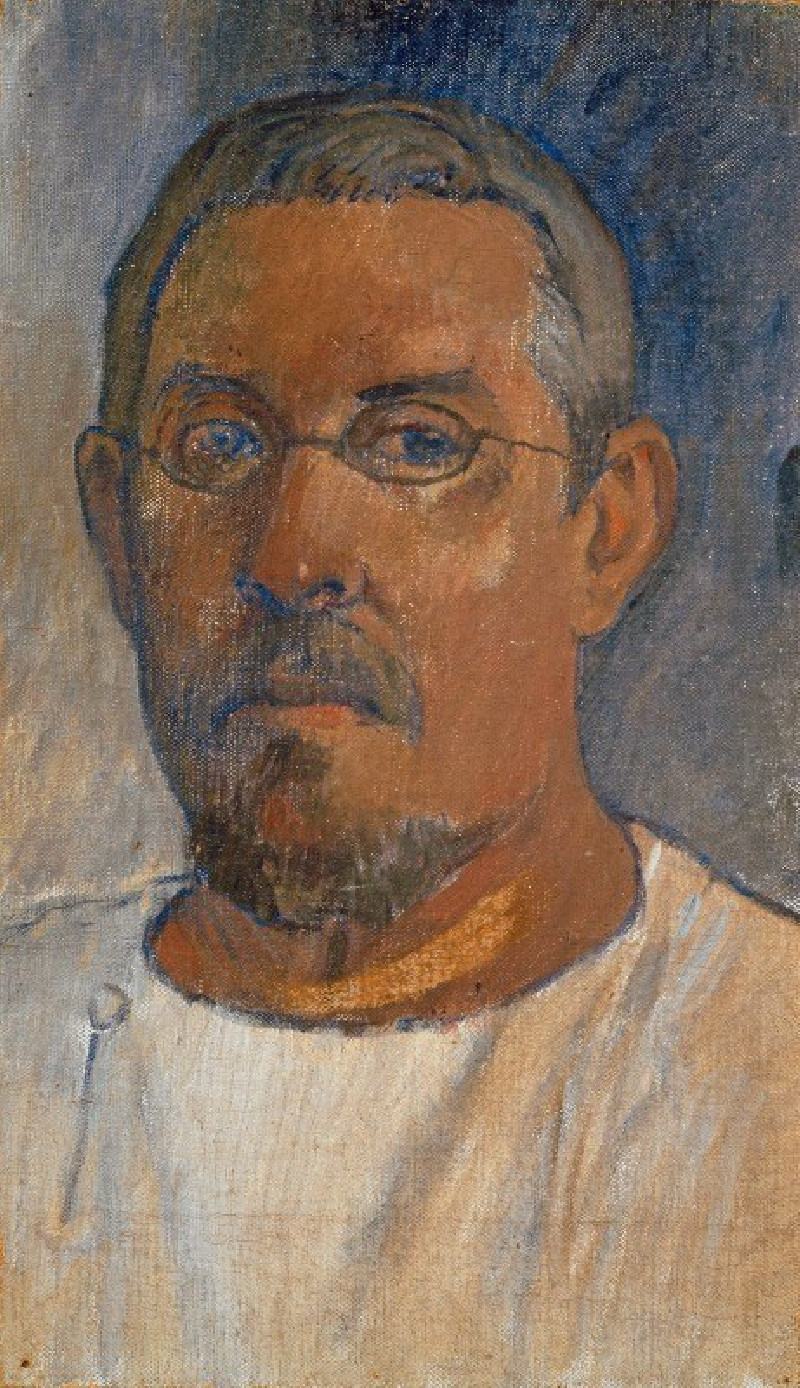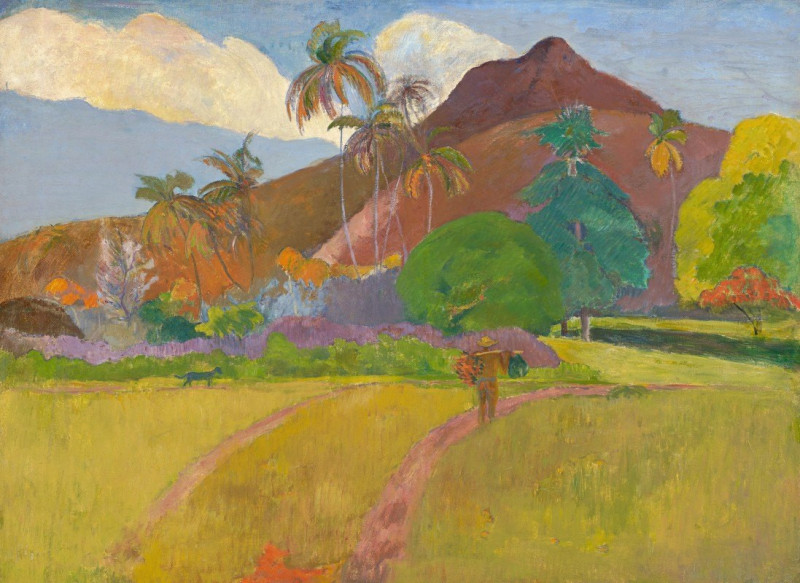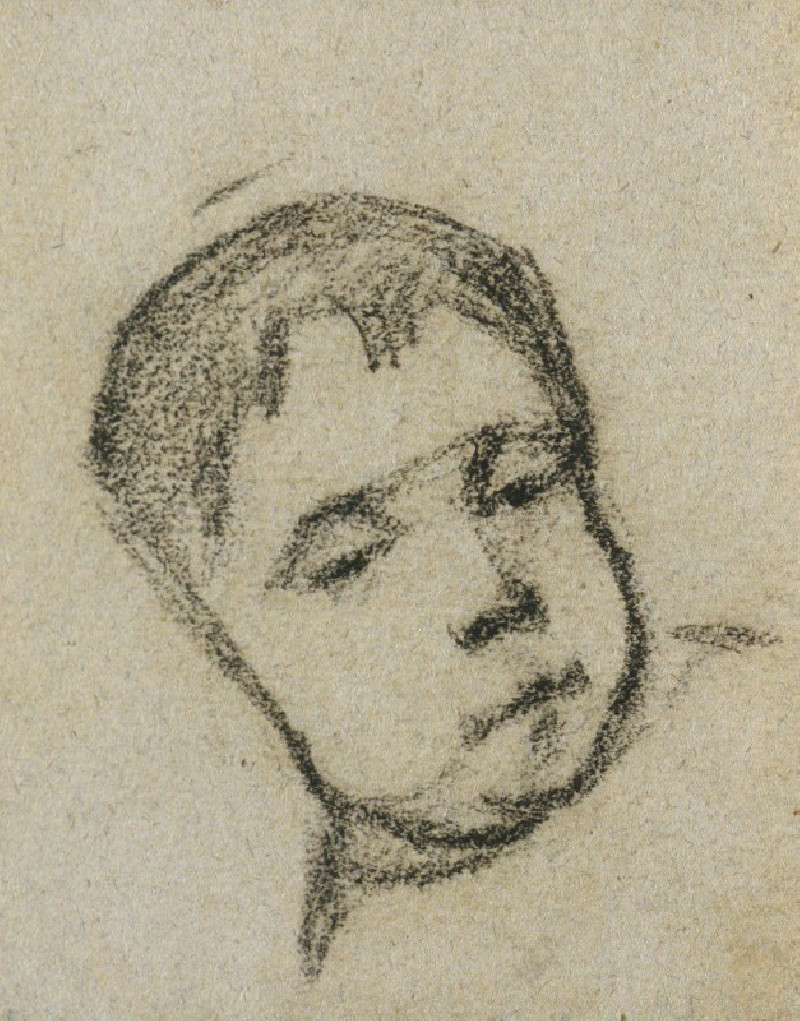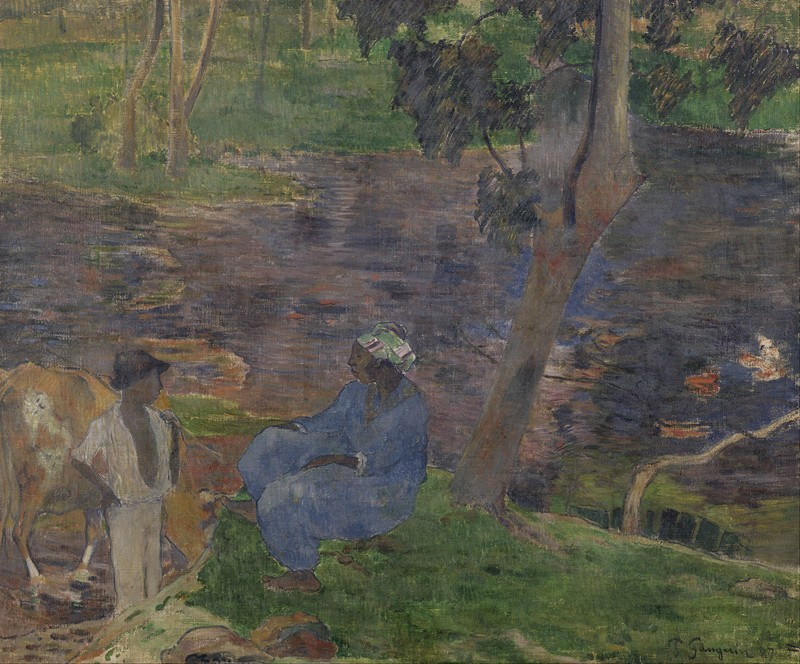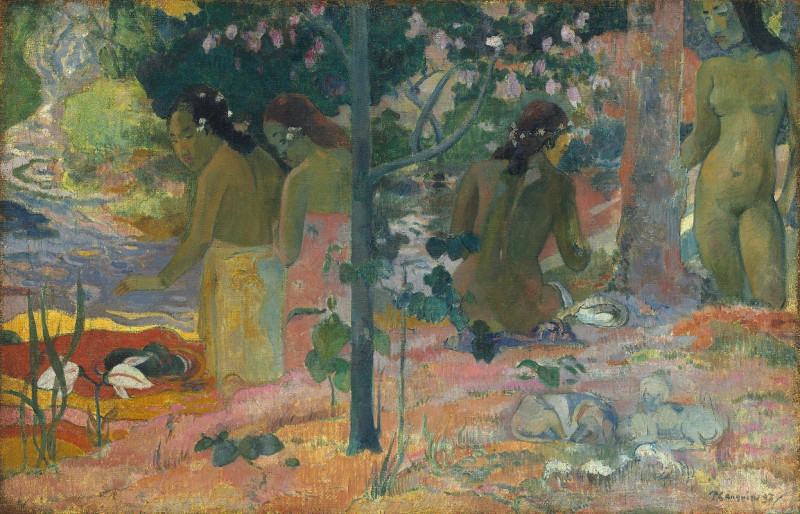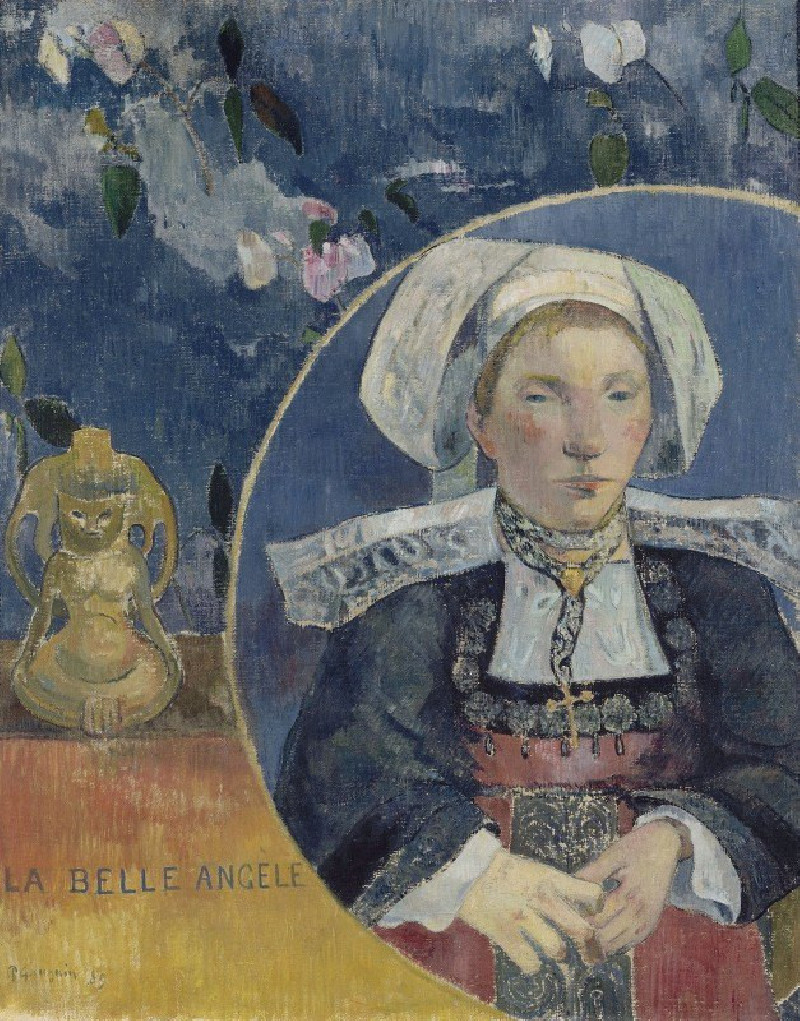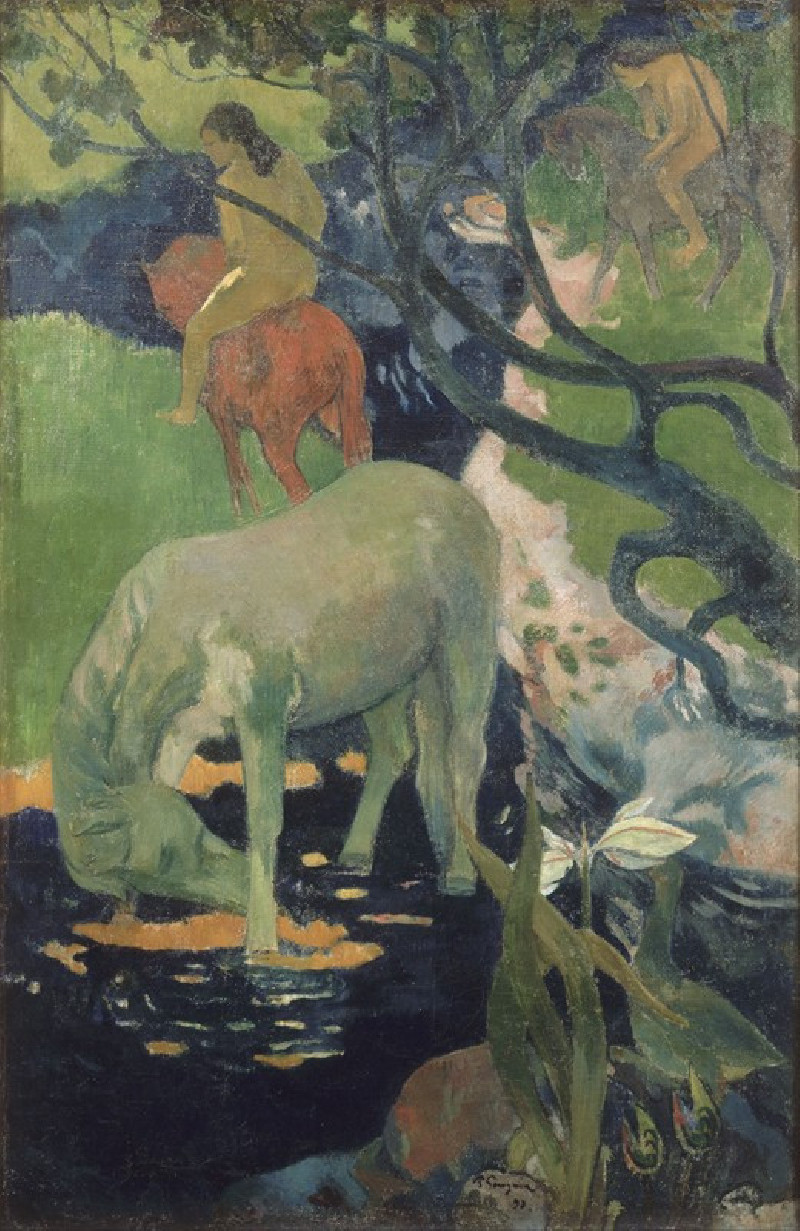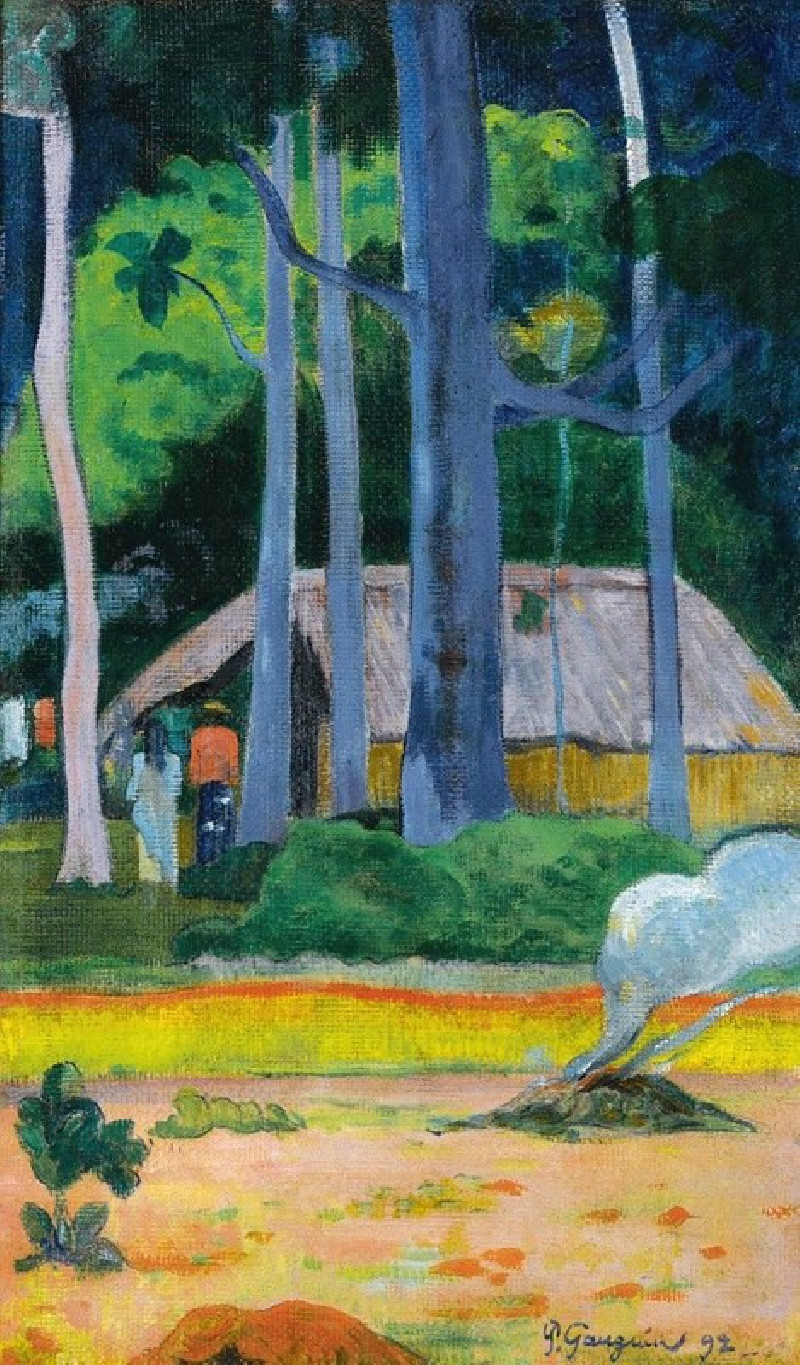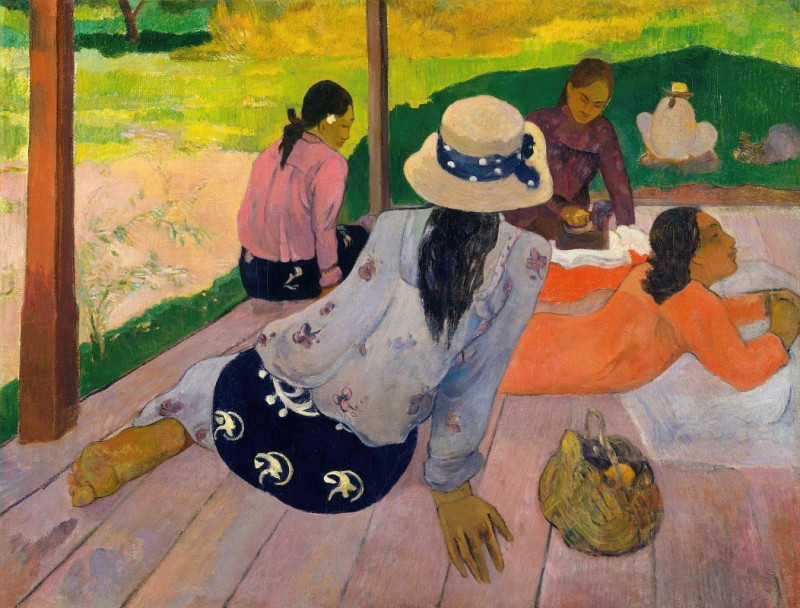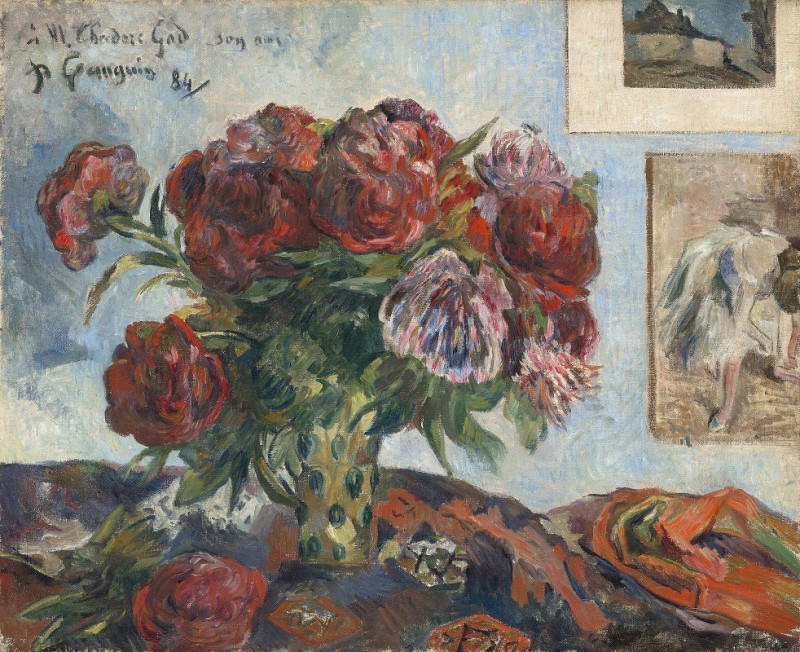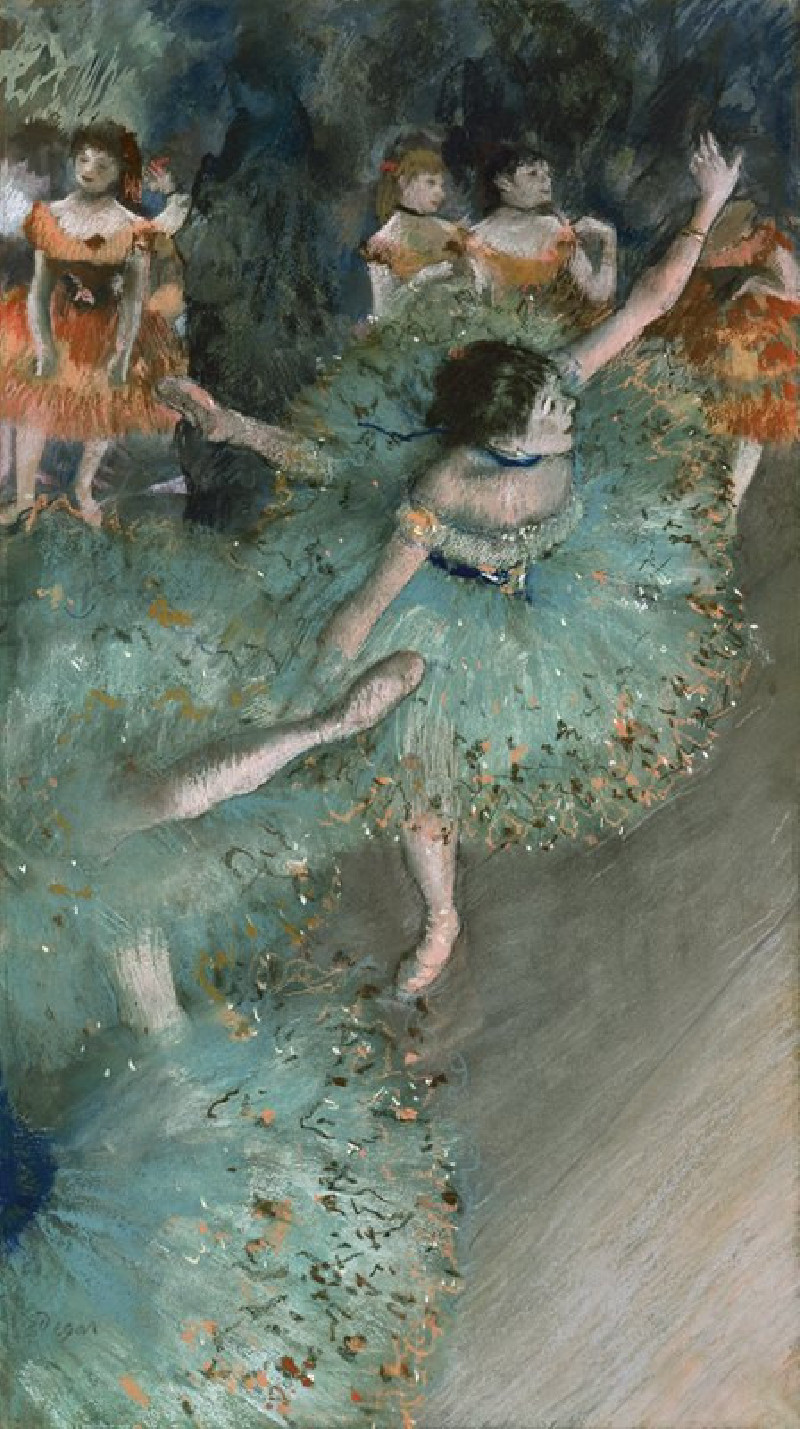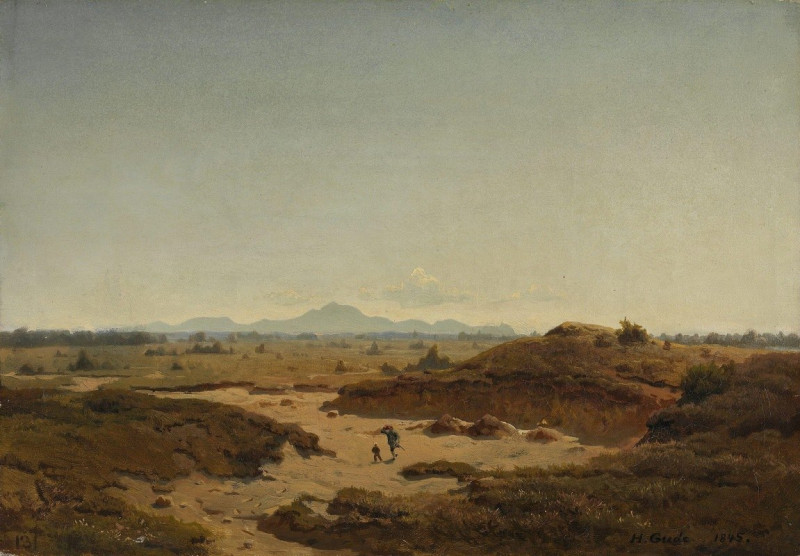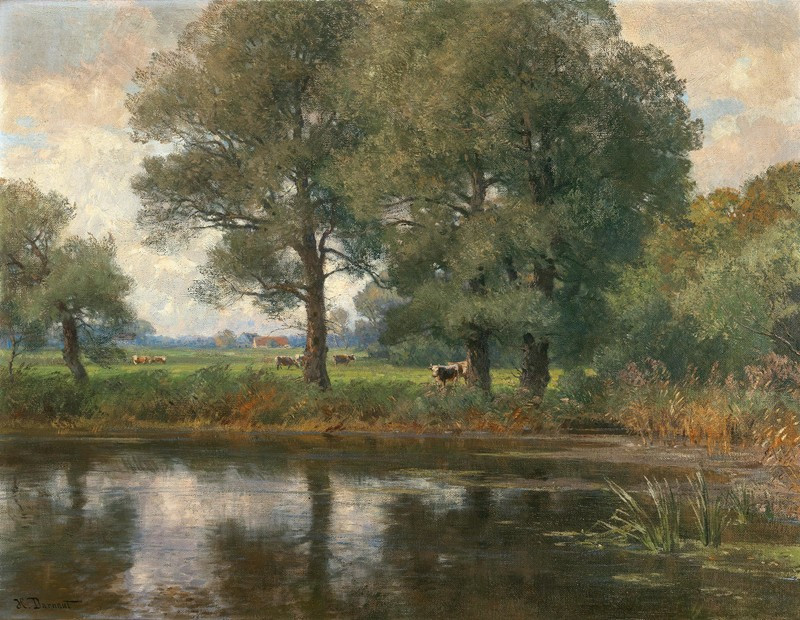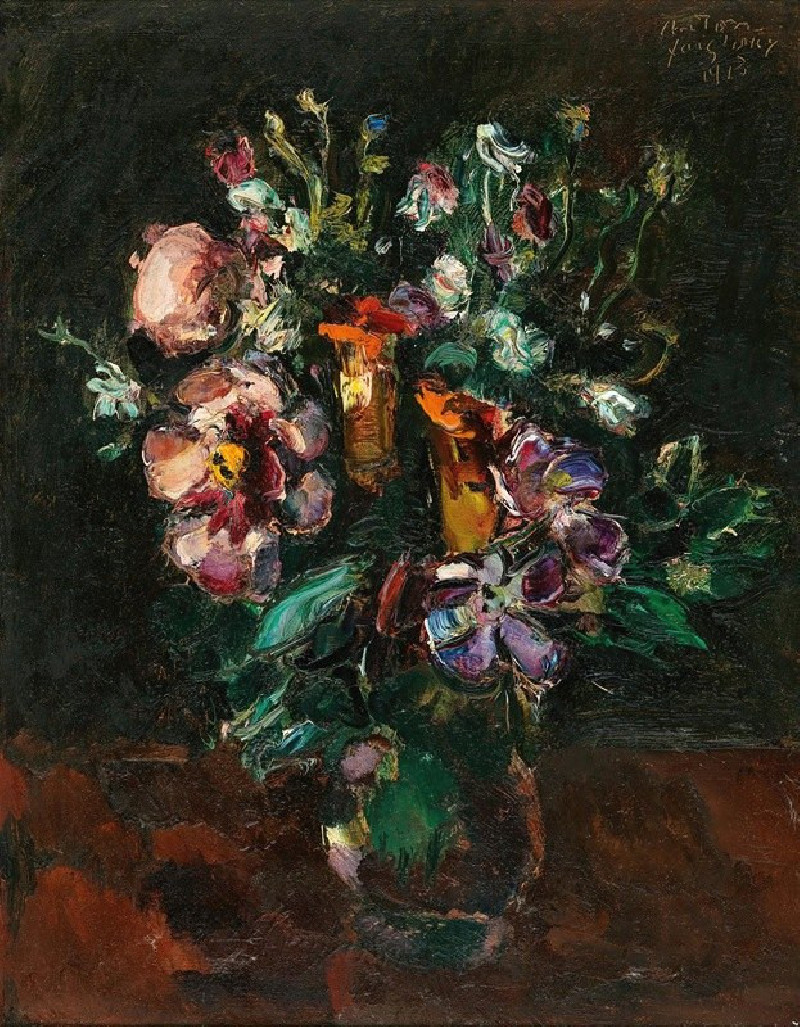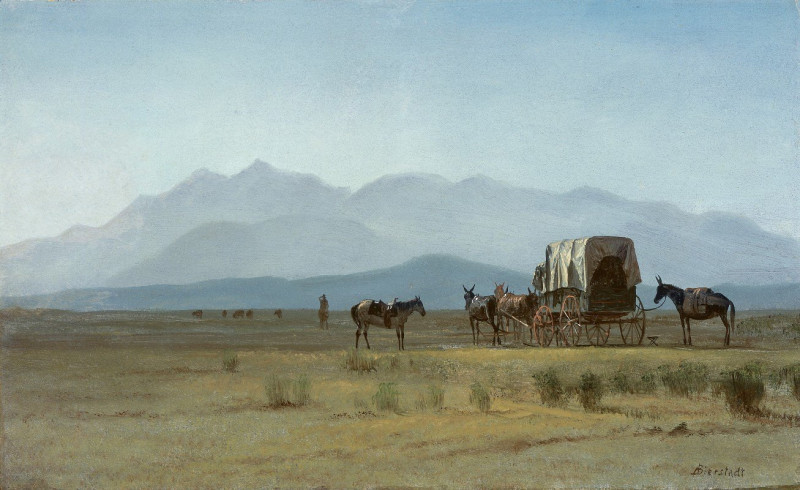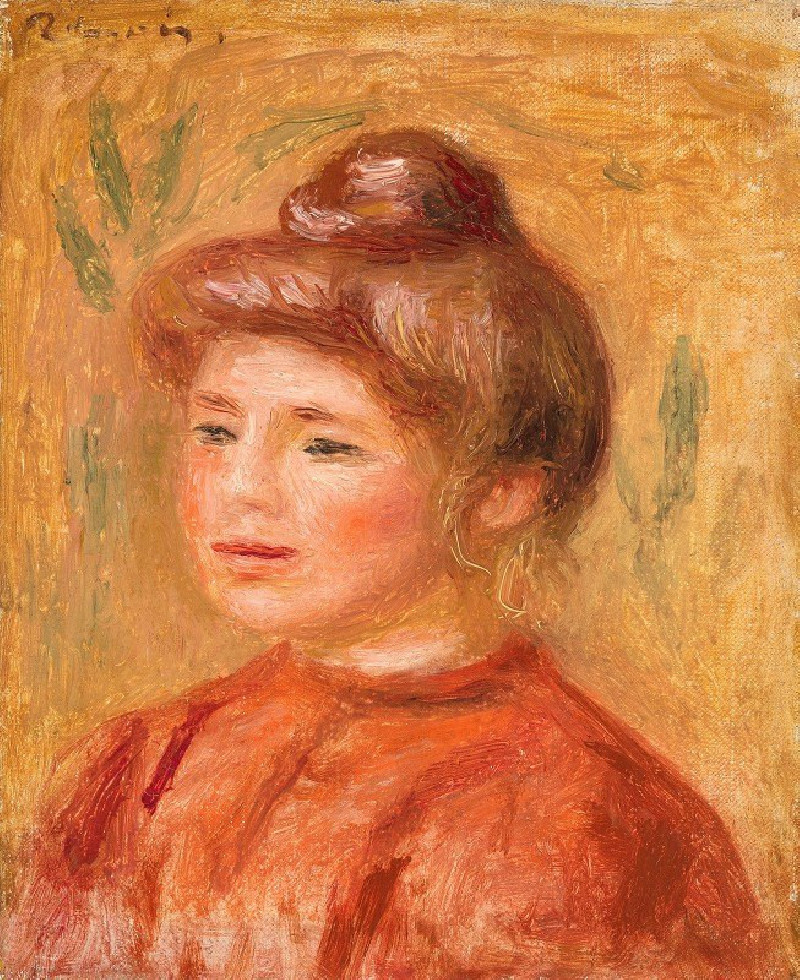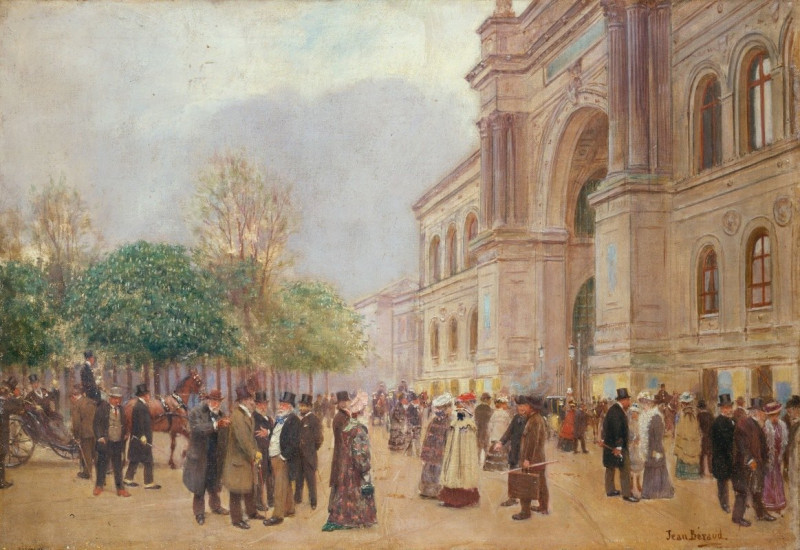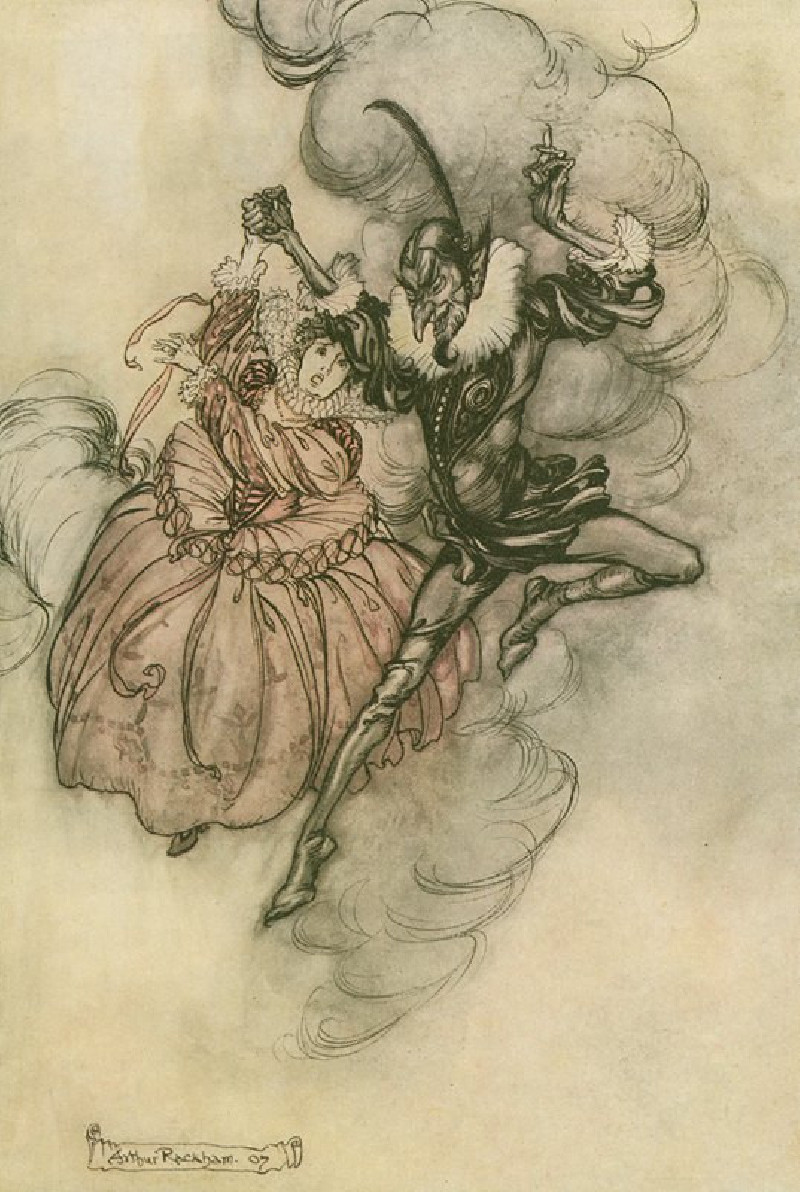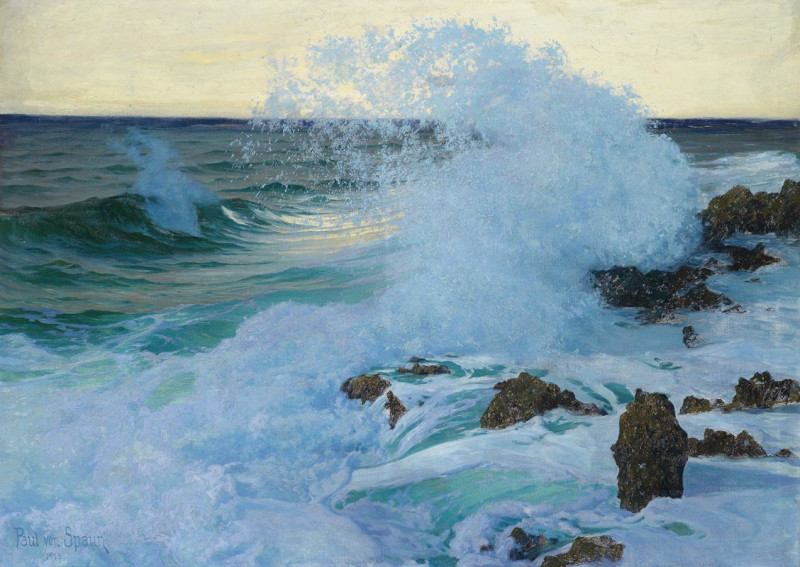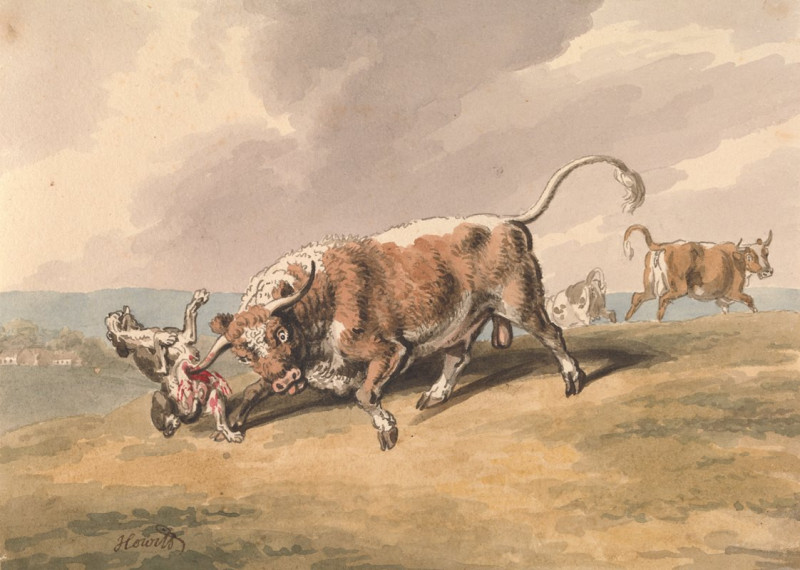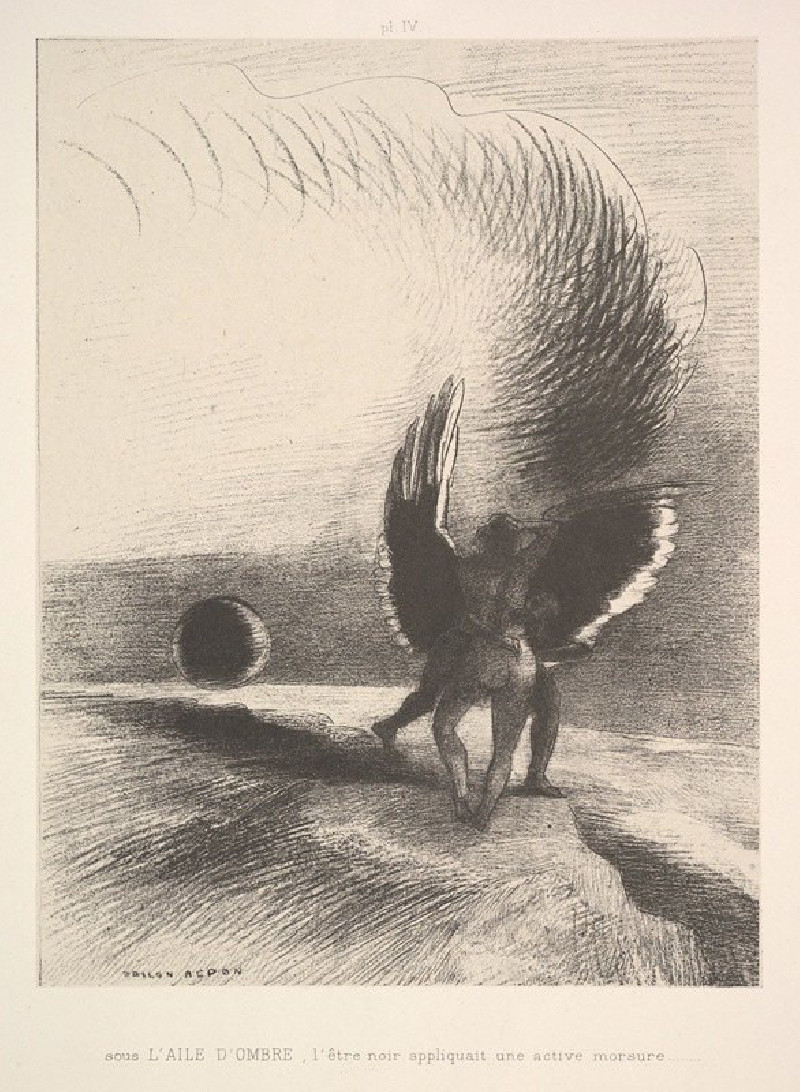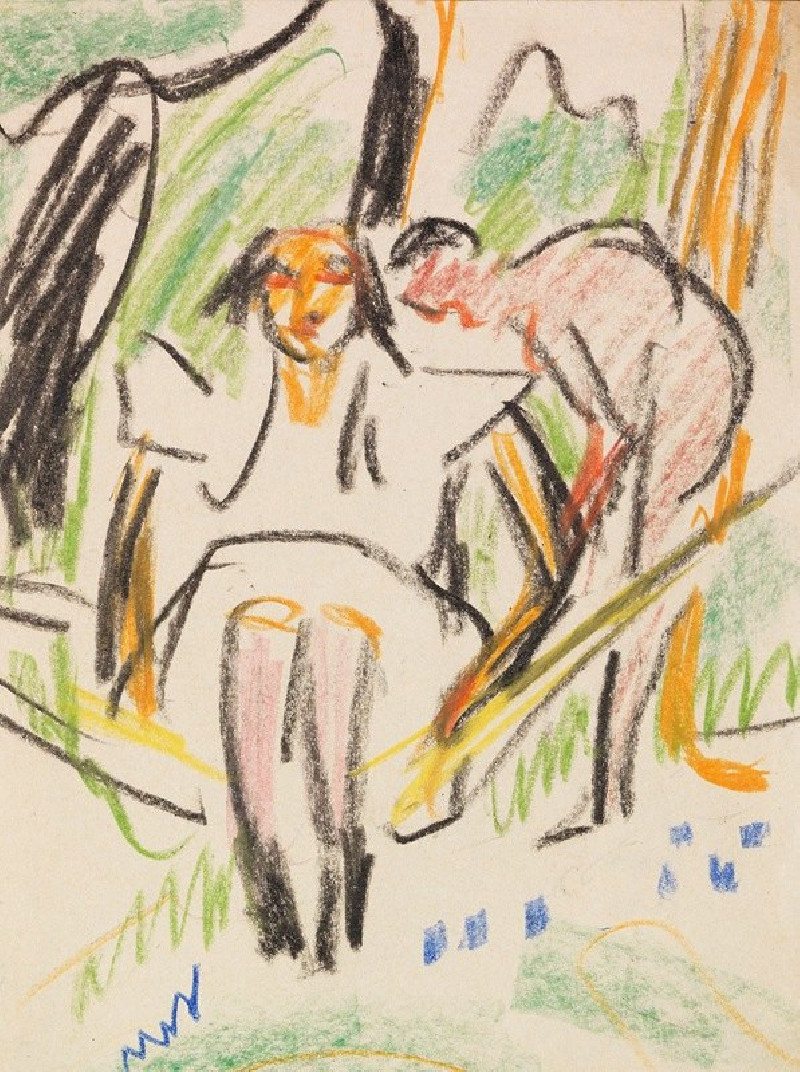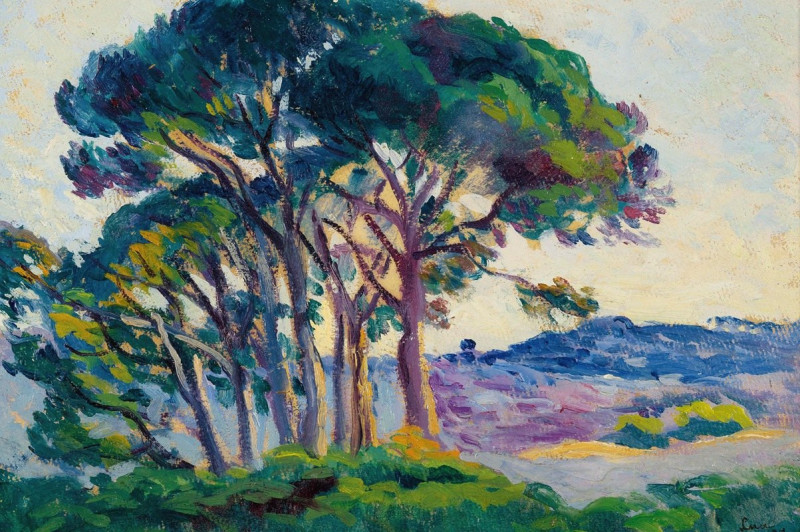Paradise Lost (ca. 1890)
Technique: Giclée quality print
Recommended by our customers
More about this artwork
In the vibrant and thought-provoking painting "Paradise Lost" by Paul Gauguin, created around 1890, the artist explores themes deeply rooted in the imagery of Eden and original sin, using a style that blends both symbolism and post-impressionist elements. This composition intriguingly harmonizes Gauguin's fascination with the exotic and mythical, often inspired by his stays in Tahiti.The painting displays a rich tropical scene populated by distinct figures: a lone nude woman is seen from the back, gazing into a lush landscape. In another section, a couple stands side by side, clothed in what resembles traditional garb that hints at both innocence and the onset of knowledge. A small, brown figure is also shown squatting, perhaps a representation of humanity in its most natural state or a specific cultural reference to the Tahitian people among whom Gauguin spent significant time.Dominating the flora in the landscape are luxurious and oversized green leaves, along with some vibrant, surreal fruit and flowers that seem to echo the abundance and the forbidden allure of Eden. These elements, coupled with Gauguin’s characteristic bold outlines and flat planes of color, evoke a primitive yet poignant narrative tableau. The setting sun or possible impending storm in the background further intensifies the sense of an ending or a loss, aligning with the painting’s title, "Paradise Lost".This artwork encapsulates Gauguin's ongoing engagement with the themes of paradise, cultural identity, and the duality of human nature, and is representative of his departure from European traditions to develop a unique, visually striking style that would influence future generations of artists.
Delivery
Returns
Eugène Henri Paul Gauguin was a French Post-Impressionist artist. Unappreciated until after his death, Gauguin is now recognized for his experimental use of color and Synthetist style that were distinct from Impressionism. Toward the end of his life, he spent ten years in French Polynesia. The paintings from this time depict people or landscapes from that region.


